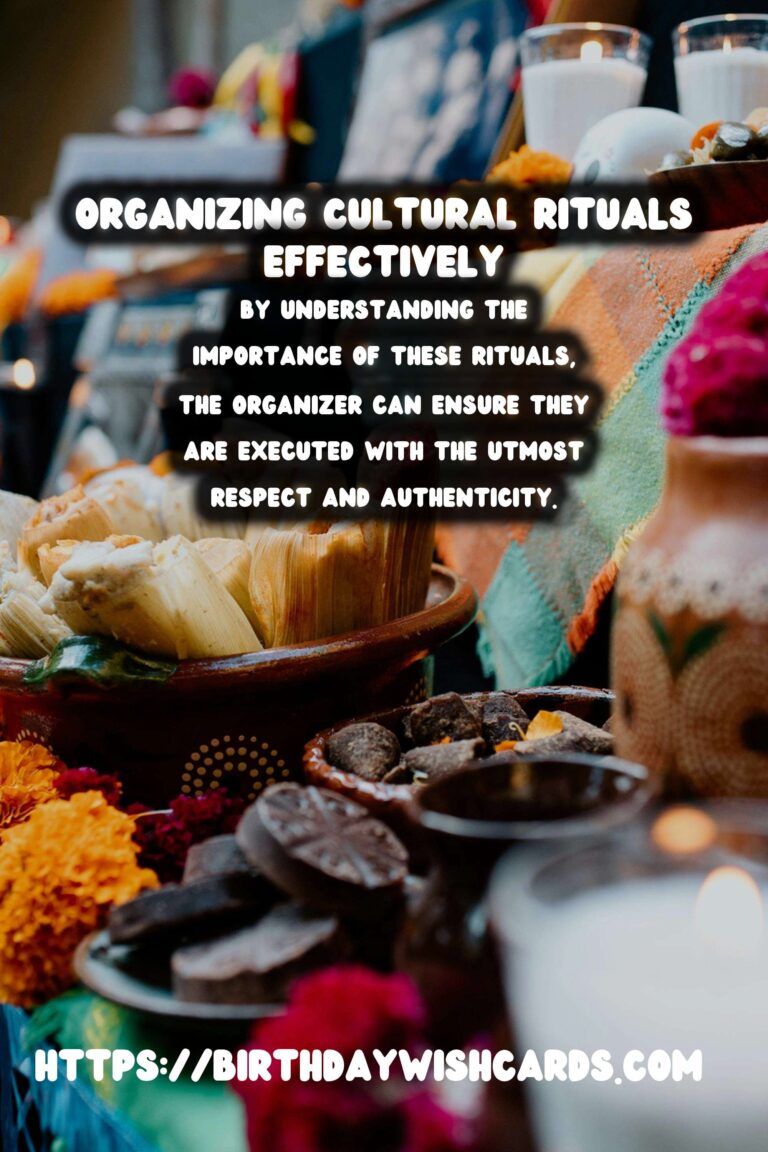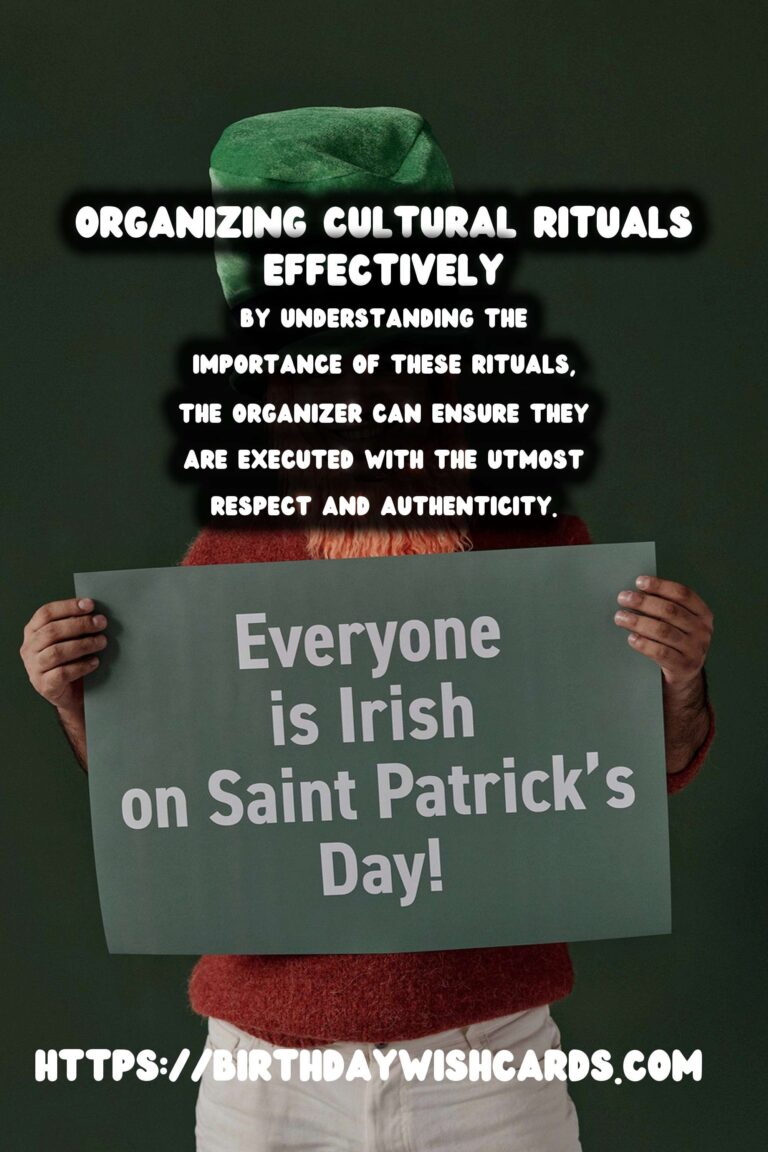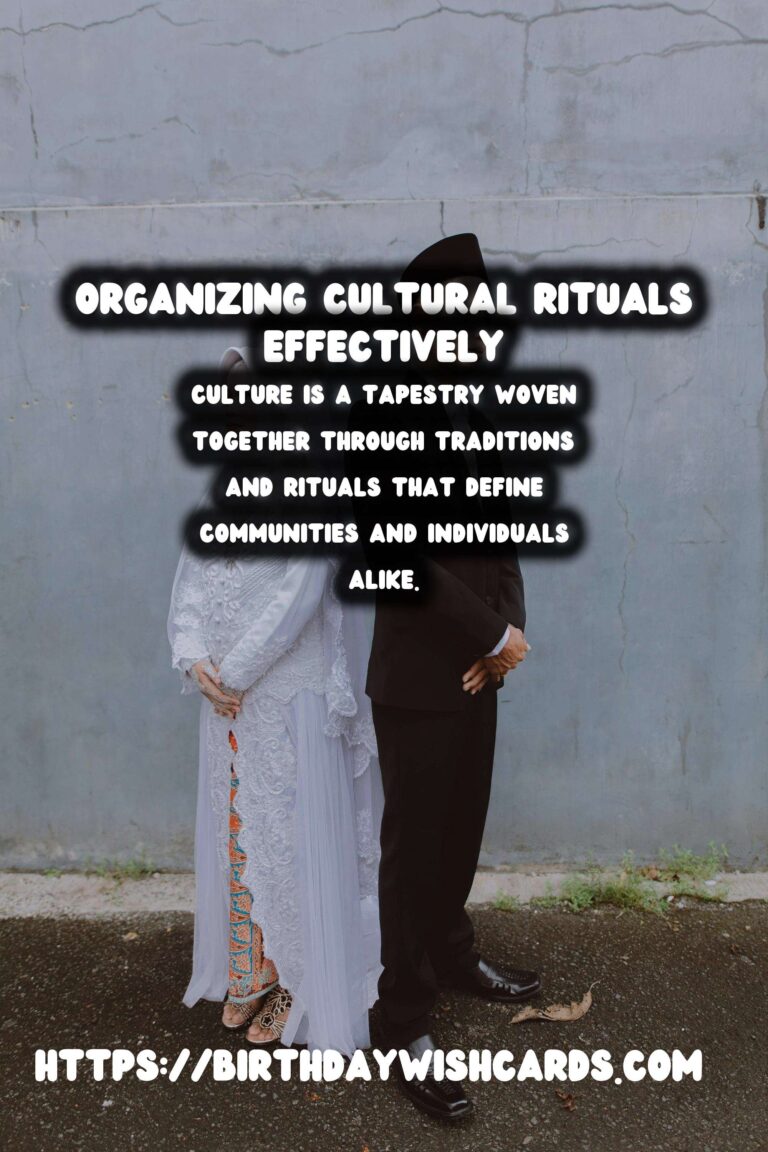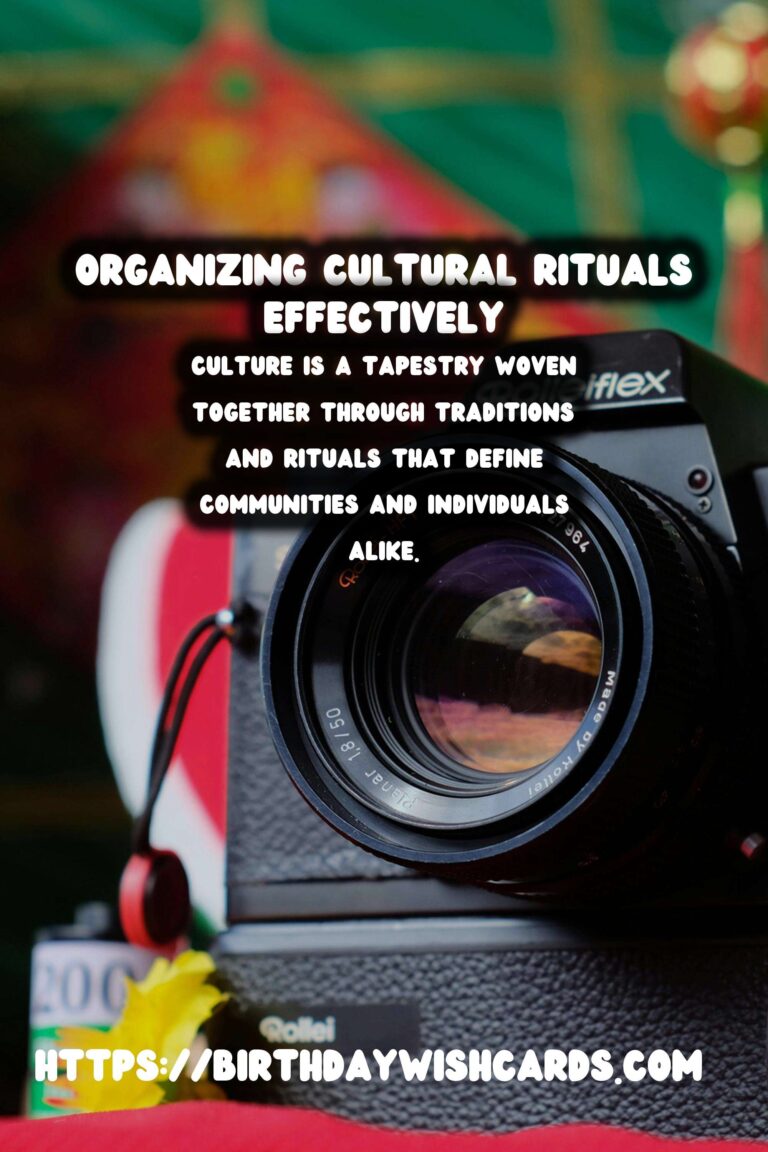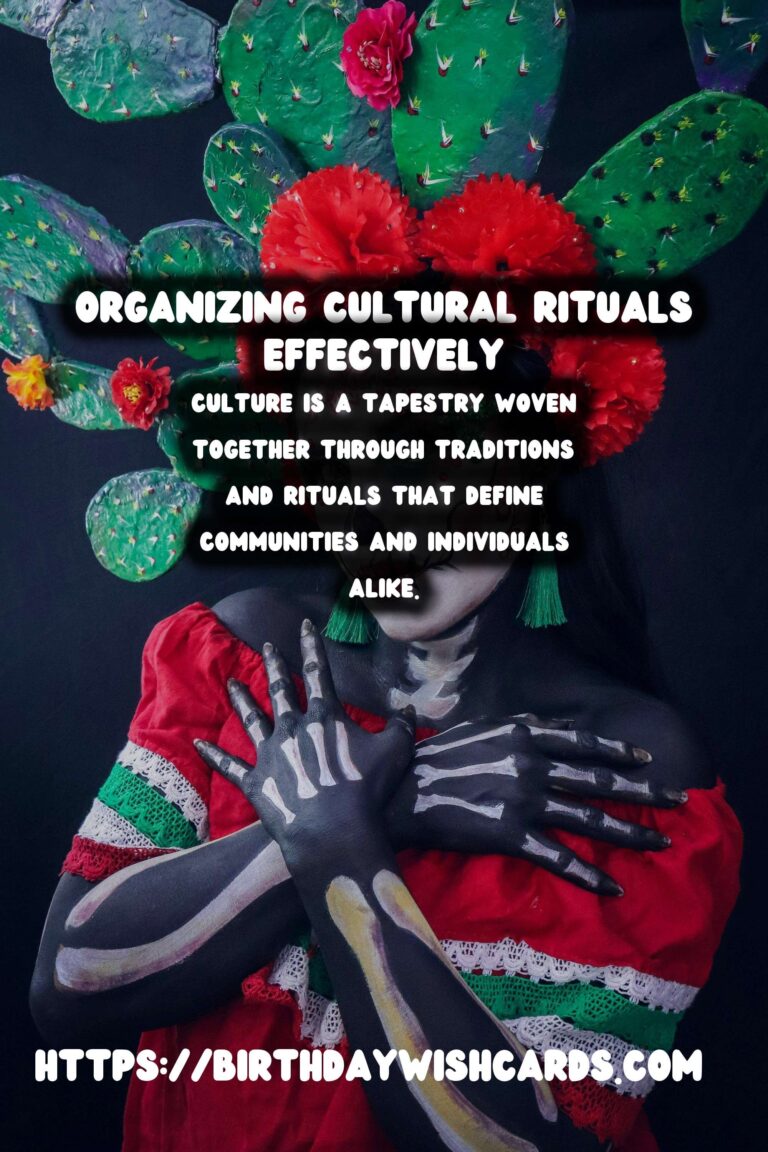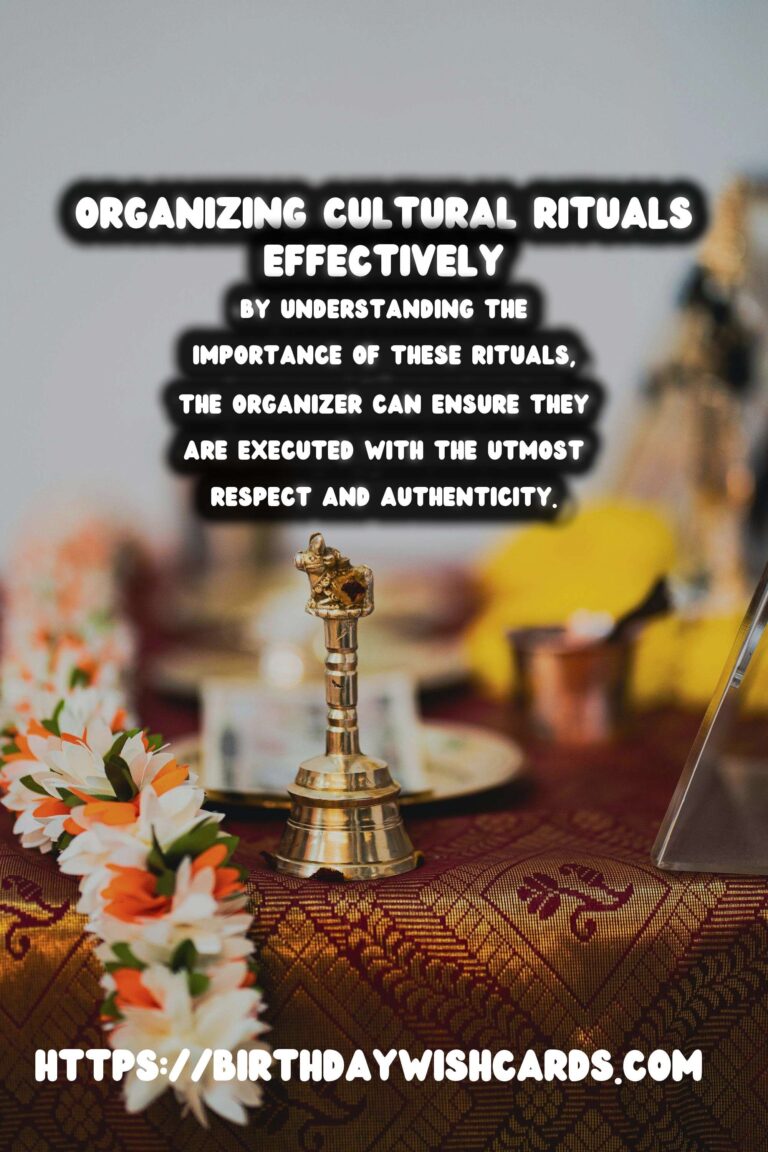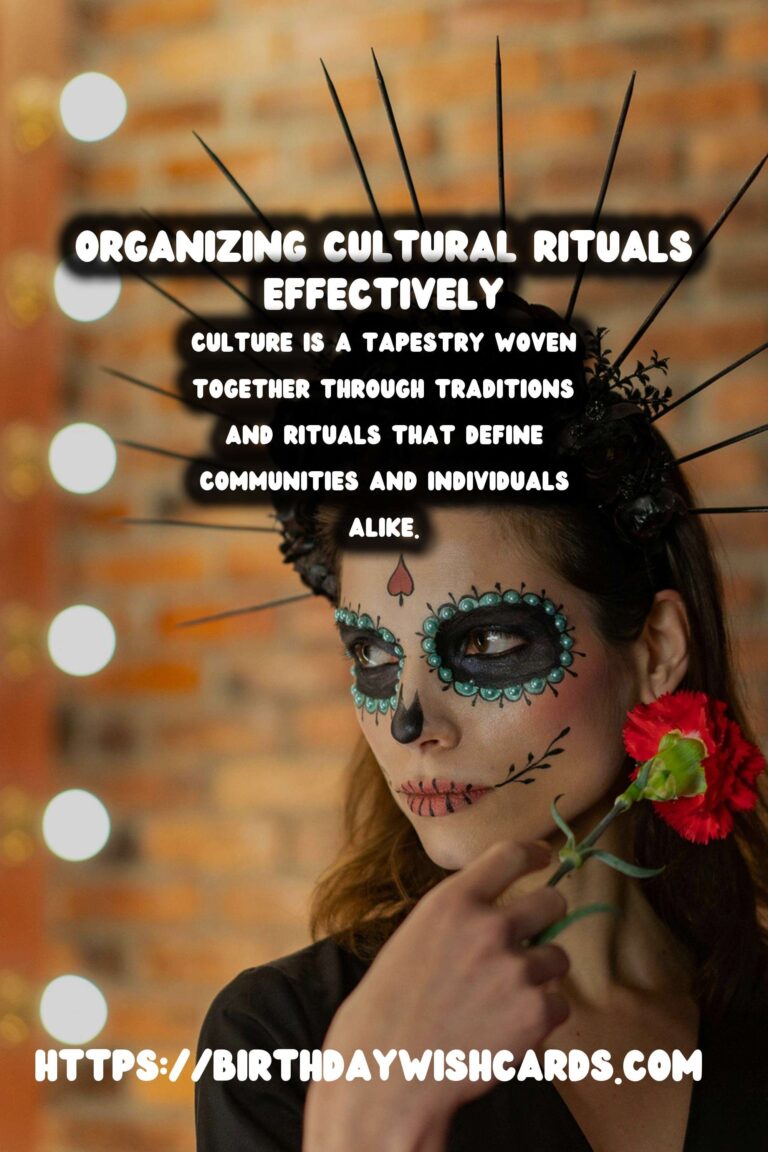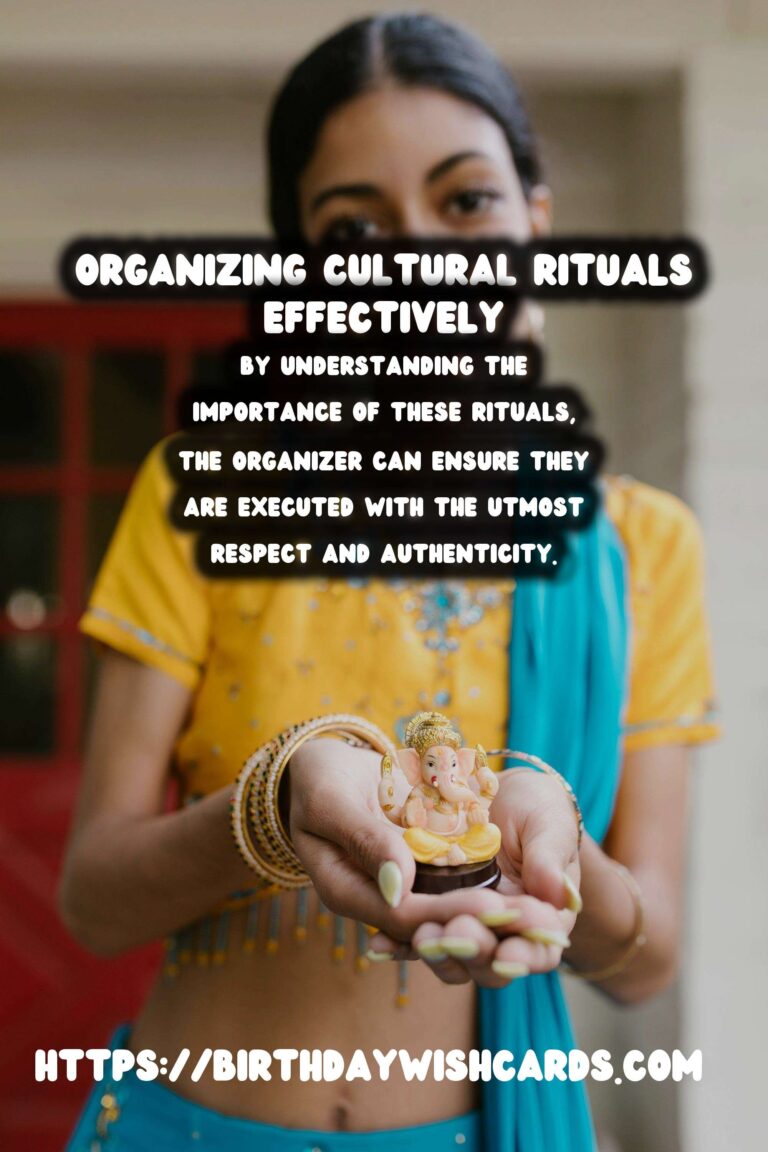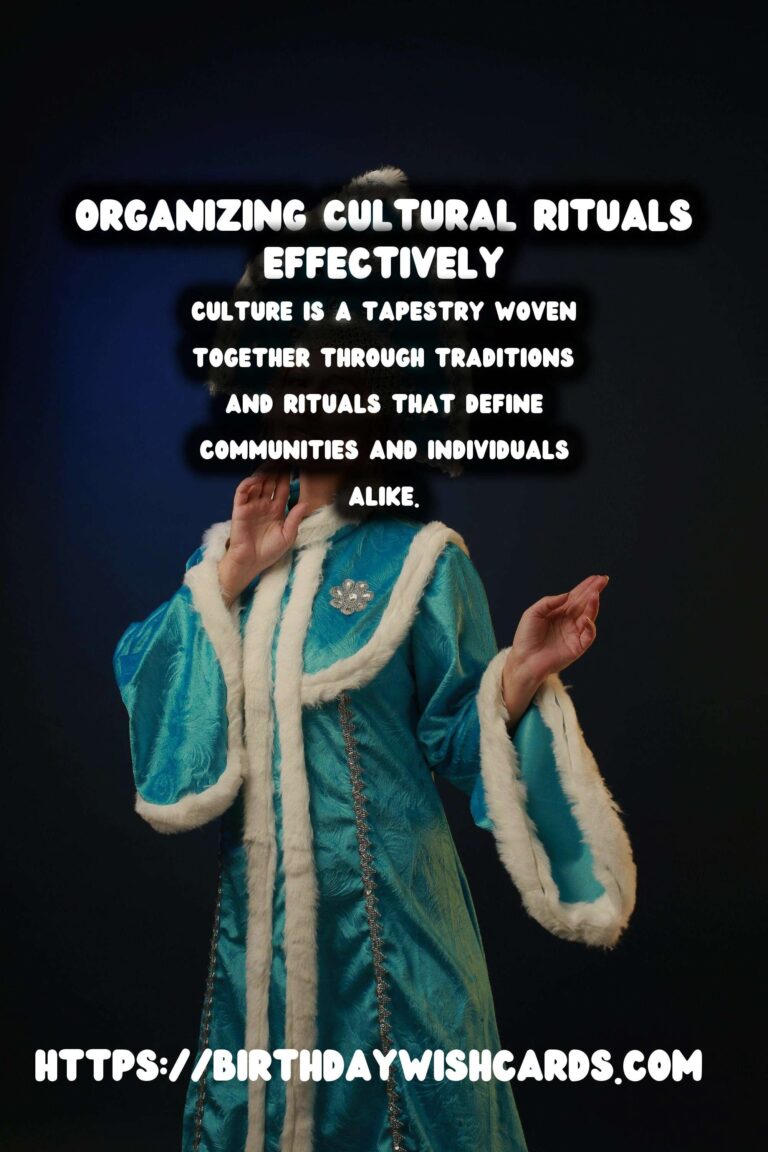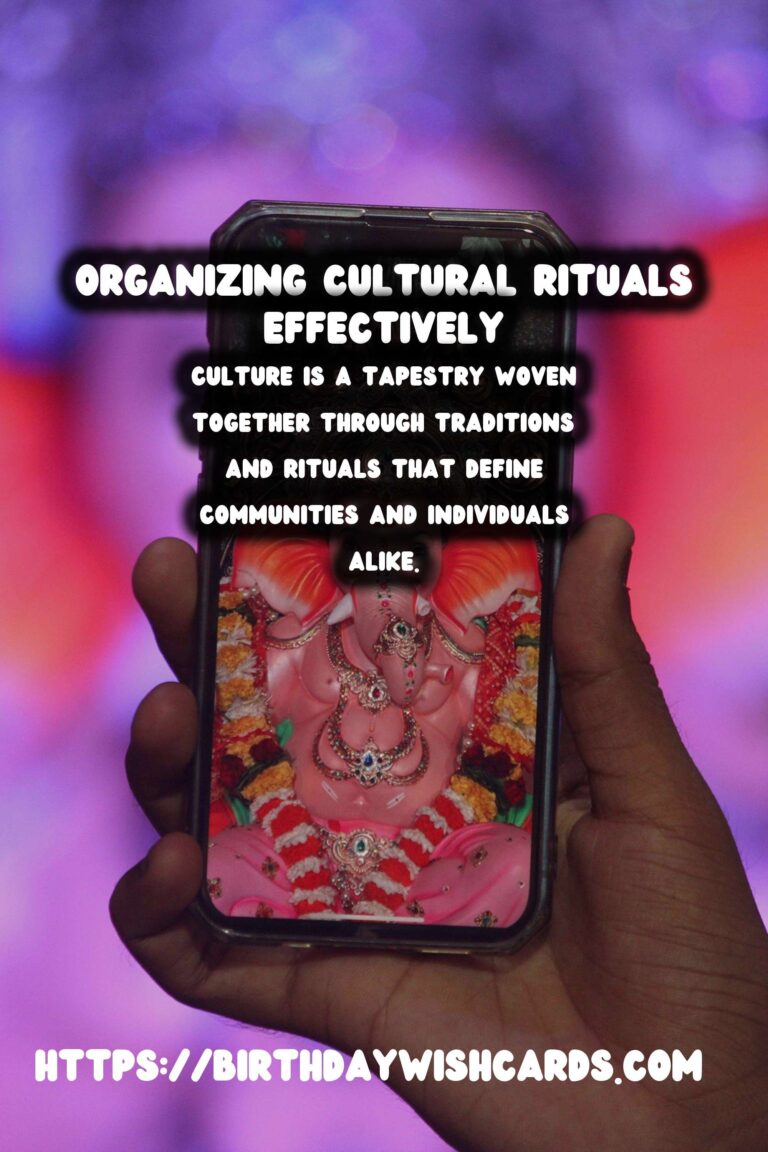
Culture is a tapestry woven together through traditions and rituals that define communities and individuals alike. From weddings to harvest festivals, these events are steeped in significance and meaning. Organizing a cultural ritual can be both a beautiful experience and a daunting task. In this guide, we will explore heartfelt ways to organize a cultural ritual that honors its significance while ensuring everyone involved feels included and cherished.
Understanding the Importance of Cultural Rituals
Cultural rituals play an essential role in preserving the identity and heritage of a community. They foster a sense of belonging and continuity among participants. By understanding the importance of these rituals, the organizer can ensure they are executed with the utmost respect and authenticity.
Defining the Purpose of the Ritual
Before you begin organizing any ritual, it is crucial to define its purpose. Is it a commemorative event, a celebration of life, or a moment of reflection? Understanding the purpose will guide the planning process and help articulate the event’s intention to attendees.
Gathering a Planning Committee
No successful ritual is organized in isolation. Gather a team of individuals who share a passion for the cultural significance of the event. This committee can help with brainstorming ideas, making logistics easier, and ensuring that the values of the culture are represented adequately.
Researching Cultural Significance
Take the time to research the cultural aspects relevant to the ritual you are organizing. Whether it’s traditional attire, music, prayers, or food, understanding these elements is vital to authenticity. Involving elders or cultural leaders can provide deeper insights and traditional knowledge.
Choosing a Suitable Date and Venue
Selecting the right date and venue can enhance the experience. Consider cultural calendars, community availability, and the significance of certain dates. Ensure the venue is accessible and can accommodate the expected number of attendees.
Inviting Participants
Craft heartfelt invitations that convey the significance of the ritual. Make sure to include all pertinent details, such as the date, venue, purpose, and what attendees can expect. Use various communication methods to reach as many people as possible within the community.
Incorporating Authentic Elements
Ensure that the ritual includes authentic cultural elements. This may include traditional practices, attire, decorations, music, and food. Each component should resonate with the essence of the culture and speak to the attendees’ hearts.
Preparing for the Ritual
As the date approaches, make a checklist to ensure everything is in place. This includes logistics for seating, decorations, sound systems, food preparation, and program schedules. Allocate tasks within the planning committee to avoid last-minute stress.
Conducting a Rehearsal
Before the actual event, conduct a rehearsal to ensure everything flows seamlessly. This will help participants become familiar with their roles and the program. It is also a good opportunity to address any concerns or complications that may arise during the ritual.
Enhancing the Atmosphere
On the day of the ritual, focus on creating a warm and inviting atmosphere. Consider incorporating natural elements such as flowers or candles, and ensure that the space reflects the cultural aesthetic you aim to honor. This setting will enhance the participant’s experience and bring the ritual to life.
Capturing Memories
Consider hiring a photographer or videographer to document the ritual, capturing the emotions and moments that unfold during the ceremony. Providing guests with a space to share their reflections and experiences will create lasting memories.
Follow-Up After the Ritual
Once the ritual is complete, it is essential to follow up with participants. Send out thank-you notes, share photos, and gather feedback for future events. This step not only expresses appreciation but strengthens community ties.
Future Planning and Reflection
After organizing a cultural ritual, take the time to reflect on the experience. Discuss with your planning team what worked well, what could be improved, and the overall impact of the event on the community. This reflection is invaluable for future rituals.
Conclusion
Organizing a cultural ritual is an act of love and dedication to one’s heritage. By following these heartfelt ways, you can create a memorable and meaningful experience that reverberates throughout the community. Engage with passion, foster authenticity, and honor the essence of the culture you are celebrating.
Culture is a tapestry woven together through traditions and rituals that define communities and individuals alike. By understanding the importance of these rituals, the organizer can ensure they are executed with the utmost respect and authenticity. 
